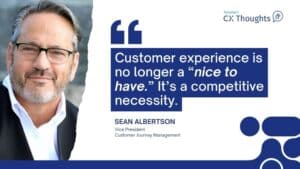Driving Respondent Participation
 I’ve been sharing a real life case-study of a manufacturer who HAD to create a market research plan in order to start collecting feedback from its distributors. All we had to do know was figure out exactly what ‘easy to work with’ looked like for our distributors and their customers.
I’ve been sharing a real life case-study of a manufacturer who HAD to create a market research plan in order to start collecting feedback from its distributors. All we had to do know was figure out exactly what ‘easy to work with’ looked like for our distributors and their customers.
The short skippy (if you haven’t been following along) is that a manufacturer of industrial me-too widgets decided to differentiate themselves by creating the “best overall customer experience” for their distributors and their end users. The only problem with this — is that they didn’t know what a “best experience” looked like. To find out, they decided to do some research.
But that turned out to be a little harder than they thought. They started with a Ning Community and then decided to create an online survey panel. But before they could even begin asking questions — they had to BUILD the community so that they had a statistically significant number of people who would answer survey questions and provide reliable decision making data.
Today, I’m going to share how we started building our respondent base
Creating a community
Our first challenge was getting all the distributors into one place. We started by creating a Ning Community and recruiting distributors into that space where they can ask questions and we can answer them. This is our version of social media. If you are in a broader market or industry, you may simply choose to use a closed Facebook or LinkedIn group to accomplish the same thing.
Our next goal was to create an online panel of distributors where we can start running online surveys and digging into the data so that we can understand any trends and start segmenting and filtering the responses.
Driving respondent participation into the community
One of the biggest challenges we had was getting people to join the Ning Community and the survey panel. These guys (more than 90% of our audience is men) didn’t spend a lot of time next to a computer, they were in their cars, traveling and making sales calls. That means we had to create incentives to join the community and more incentives to participate.
We decided to run a sales contest and to manage the points via the online survey panel. This way, if they wanted to win prizes, they had to participate in surveys.
That strategy was somewhat successful, we got about 80% of the distributors into the panel with that one. But we didn’t get all of them — AND — our response rates were dismal to say the least.
LEARN ABOUT: What Is A Panel Survey?
We made mistakes — here are just a few — DON’T do this!
Needless to say — we made mistakes. The first mistake we made was NOT telling people exactly what we were doing — MULTIPLE times.
We sent out an email and put announcements in the Ning Community. But that wasn’t NEARLY enough. Here what would have been better:
- Run a webinar: We could have run a webinar and had it count toward sales contest points. We could have introduced the panel and sold them on how exciting and easy it was.
- Run a panel training session: Another thing that would have been helpful was to record a panel training session that explained exactly how the panel worked, what the emails looked like and showed them how to take the surveys. This would also have proven to them that the surveys were super short and easy.
- We didn’t have a plan: There’s a reason why I’m writing these posts on how important a market research plan is — we didn’t have one and it HURTS.
LEARN ABOUT: Market research industry
We did some things right — DEFINITELY DO THIS
But we weren’t total losers. We did some things right, too.
- We started a conversation: We decided to treat the surveys and their results as a conversation.
- We ran weekly surveys and results: We sent weekly super-short surveys, we enabled the customer spotlight report so that they could see how other people answered and we also shared the results of the previous week’s survey in the email that introduced the next weeks survey. This taught them how to click.
- We ran fun surveys: We didn’t just run boring industry surveys, we ran fun personal surveys like “what are your plans for the Fourth of July”. We asked them about what sales contest prizes they wanted to win, etc. The idea was to get them to know each other a little bit better as we got to know them.
As you can see, there is a whole social media strategy involved in getting your community engaged around the surveys that you’re running — don’t underestimate the time, effort and conversational planning that goes into this process.
— there HAS to be a plan, a map of what we are asking and what channel is the best place to start that conversation.
Market research plans are practical
There is a reason why I’ve been writing about market research plans. I can tell you that NOT having one was the cause of a tremendous amount of lost time and effort AND money. I think I had learned something about market research plans in college or graduate school, but that was NOT the reason we did one. We did one because it’s NECESSARY.
Without the market research plan we were having multiple calls and meetings, we were sending these stupid surveys that didn’t have rhyme or reason and we weren’t even sure that they contributed to our strategy. It was clear very early on that a simple plan was necessary. So we started writing one.
Here’s a hint to the next series — actually writing a real market research plan is WAY harder than writing ABOUT a market research plan.








[…] A Real Life Market Research Plan: Driving Respondent Participation (questionpro.com) […]